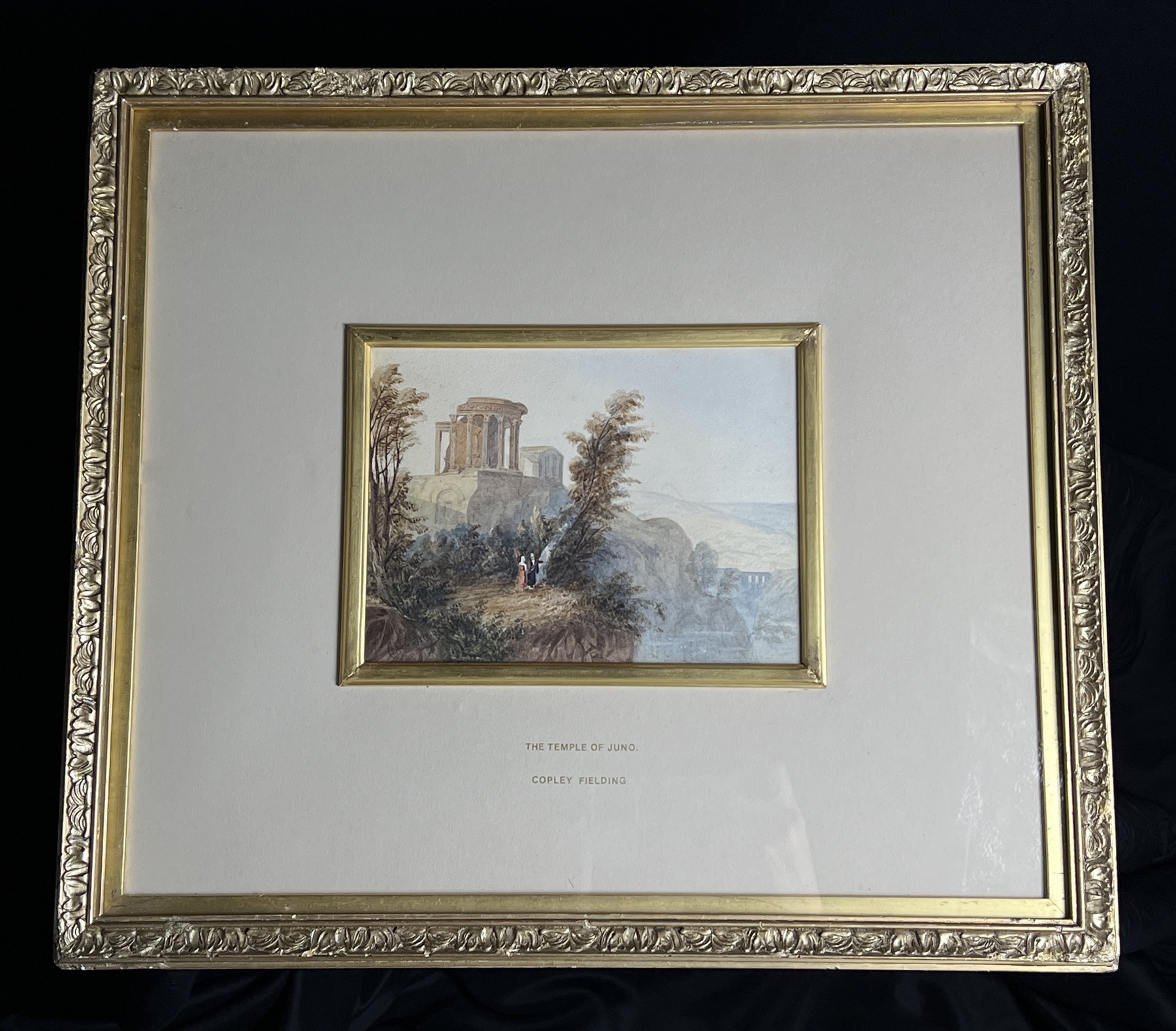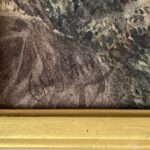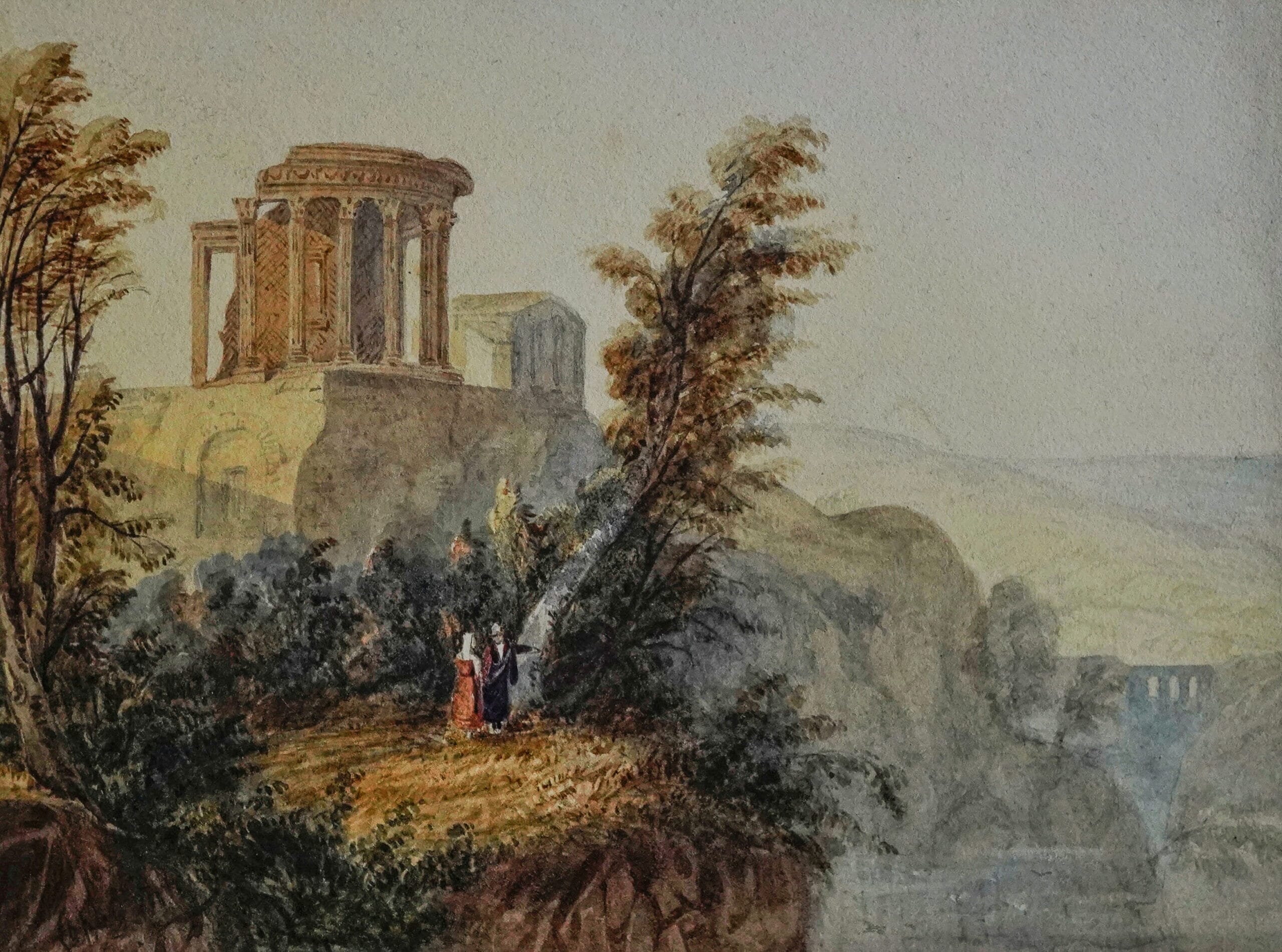In today’s world-wide situation, ‘Armchair Travel’ is a necessity. The difficulty in heading off on a grand tour is huge, and the likelihood of being marooned somewhere due to closed borders is high. Stick to google street view exploration for the moment!
A recent discovery at Moorabool reveals the idea has been around a long time. Finely detailed and depicting an ancient ruin in a dramatic landscape, the work is signed Copley Fielding.

Copley Fielding (1787-1855) was a very talented artist of the Georgian period. Born in the Midlands in 1787, he was the son of a portrait painter (Nathan Theodore Fielding), who gave him the inspirational ‘Vandyke’ name as tribute to the famous artist. The inspiration worked, as he showed strong talent at an early age. In 1810, he entered the Royal Academy schools, being taught by John Varley and becoming a close friend of William Blake. The same year he was an associate exhibitor of the Royal Society of Watercolours (RWS), later serving as President. In 1824 he won a gold medal at the Paris Salon, alongside Constable. He exhibited constantly in the RWS exhibitions, and a smaller number of his oil paintings at the Royal Academy.


(1787-1855)
National Portrait Gallery, London
-by Sir William Boxall
Best known for his atmospheric ‘Romantic’ landscape views in the British Isles, and windswept seascapes, there are a small number of works in his repertoire depicting exotic overseas locations: Rome, Naples, and this example, the temples of Delphi in Greece. They are all imaginative – he never travelled out of Britain!
The scene in this work is the famous temple complex at Delphi, Greece. His direct inspiration would have been an artist’s sketch – it was a ‘top-10 destination’ for anyone with artistic ability on the ‘Grand Tour’, and in his RWS position he would have constantly come across people who had been there with their sketchbook. However, he has enhanced it to make it more impressive; the ruins are less ‘ruined’, the rounded form of the Tholos being remarkably intact, and the rectangular Temple of Apollo apparently still having its roof!

The title on the old mount it is in is most confusing, and perhaps illustrates the nature of Copley Fielding’s inspiration: there is no ‘Temple of Juno’ at Delphi, although the mountainous scene is clearly meant to be Delphi. Several temples of Juno elsewhere in the Classical world survived and were sketched, but all are standard rectangular constructions. Clearly something got lost in translation between sketchbook and watercolour brush, by either the original artist, or the mount-maker of this work.

The rare Copley Fielding depictions of foreign lands include Rome, Naples, Greece (such as ours) and exotic Middle-Eastern landscapes. They are all ‘flights of imagination’: he was a true ‘Armchair Travelling-Artist’.
How interesting that this work depicts the Temples at Delphi, regarded as the very center of the world by the ancient Greeks, the start and finish of all journeys.

His works are represented in a large number of major collections around the world, including the V&A and the Tate, London, The Met NY, The Art Gallery of NSW, and our very own National Gallery of Victoria in Melbourne.
This rare English Watercolour is now offered by Moorabool Antiques.

